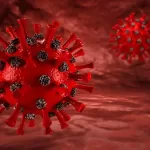
Researchers unlock the chronic kidney disease ‘treasure map’
August 15, 2021Despite the fact that chronic kidney disease affects an estimated 850 million people worldwide and is responsible for 1 in every 60 deaths, few treatments are available. Understanding the genetic variants associated with disease is a critical step in the development of new drugs. Now, in one of the most comprehensive genome-wide association studies to date, researchers at the University of Pennsylvania’s Perelman School of Medicine have identified 182 genes likely responsible for kidney function—many of which can be targeted with currently available drugs—as well as 88 genes associated with hypertension. Additionally, the research team identified key cell types and molecular mechanisms associated with disease. The findings were published in Nature Genetics on Thursday.
The study paints one of the most complete pictures of the genetic basis of chronic kidney disease to date. And it paves the way for the identification of potential treatments, which are urgently needed, according to principal investigator Katalin Susztak, MD, Ph.D., a professor in Penn’s division of Renal-Electrolyte and Hypertension, who co-authored the study with lead author Xin Sheng, Ph.D., a postdoctoral fellow at Penn. “Fortunately, several of the genes associated with kidney disease can be targeted with currently available medications.” Chronic kidney disease is a growing global health problem and economic burden. According to the Centers for Disease Control and Prevention, total Medicare spending on patients with kidney failure reached $36.6 billion in 2018, accounting for roughly 7% of all Medicare-paid claims costs (CDC). While diabetes and hypertension play critical roles in the development of chronic kidney disease, the disease has a strong hereditary component, and genetic factors are increasingly recognised as contributing to disease risk. To gain a better understanding of the genetic variants associated with kidney disease, researchers have turned to genome-wide association studies (GWAS), which involve scanning hundreds of thousands of people’s complete genomes for DNA variations. Although existing genetic studies have identified approximately 300 regions of the human genome associated with kidney disease, these maps have not been able to pinpoint specific genes, cell types, or mechanisms.
“Previous maps identified regions in the genome associated with kidney disease heritability, similar to an initial treasure map, but we did not know where or how the treasure chest looked,” Susztak explained. “Our objective was to pinpoint the precise location of the treasure and to open the box to discover what was inside.” One significant difficulty in mapping genetic maps to specific genes is that the majority of genetic variants associated with kidney disease alter how genes are regulated. The researchers overcame this obstacle by collecting 659 human kidney samples—a sizable population. They analysed the expression of each gene and genetic variation after manually dissecting each tissue sample.
The team then used a newly developed single cell sequencing method to generate gene expression and regulation data for each human kidney cell type. This allowed the researchers to identify the key cell types in which the genetic variant results in abnormal gene expression. Their findings identified nearly 200 genes associated with kidney function and nearly 100 genes associated with hypertension. Finally, the researchers elucidated the mechanisms of action of several currently available kidney disease drugs, including angiotensin converting enzyme inhibitors and angiotensin receptor blockers, demonstrating that they were associated with disease-causing genes.
“We’ve been using these drugs for decades, but we now understand why they work so well,” Susztak said. “This study is a turning point for the field of nephrology and the millions of patients currently living with chronic kidney disease.”
Reference
Xin Sheng et al, Mapping the genetic architecture of human traits to cell types in the kidney identifies mechanisms of disease and potential treatments, Nature Genetics (2021). DOI: 10.1038/s41588-021-00909-9

















